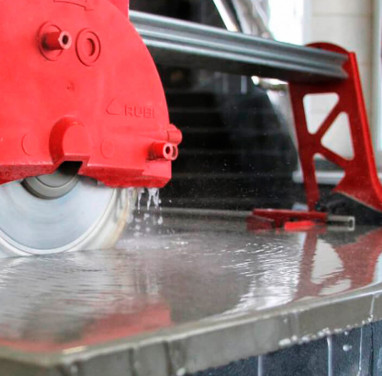How to Choose an Electric Tile Cutter: Types, Benefits, and Usage Tips

Cutting ceramic tiles and porcelain stoneware requires high precision and accuracy. Using a specialized tool – an electric tile cutter – allows achieving a high-quality result with minimal effort. In addition to the equipment itself, it is important to correctly select a professional diamond blade for the tile cutter. In this article, we will look at the main types of electric tile cutters, their advantages, and the criteria for choosing the appropriate model for the most efficient and fast work.
Advantages of electric tile cutters
Electric tile cutters have a number of advantages compared to other tools such as angle grinders or mechanical cutters:
-
High cutting precision. Thanks to guides and a stable structure, a straight and accurate cut is ensured.
-
Minimal chipping. The use of diamond blades with water cooling reduces the likelihood of chips on the tile edges.
-
Dust reduction. The water supply system to the cutting area reduces dust formation, improving working conditions and reducing the load on the respiratory system.
-
Versatility. Tile cutters are suitable for cutting ceramic tiles, porcelain stoneware, marble, and natural stone.
Types of electric tile cutters
Tile cutters with bottom-mounted motor (submersible type)
In these models, the motor and blade are located under the working surface. The tile is manually fed onto the rotating blade.
Advantages:
-
Compactness and low weight
-
Ease of use
-
Suitable for tiles up to 600×600 mm and small volumes of work
Disadvantages:
-
Limited power and cutting depth
-
Less accuracy compared to top-mounted motor models
Tile cutters with top-mounted motor (bridge type)
The motor with the blade is mounted on a movable carriage that moves along guides above the working surface.
Advantages:
-
High cutting precision and quality
-
Ability to cut at an angle, including 45°
-
Suitable for tiles up to 1200 mm and any thickness
Disadvantages:
-
Large size and weight
-
Higher cost
Tile cutters with movable table (cantilever type)
In these models, the tile is fixed on a movable platform that is fed toward a stationary blade.
Advantages:
-
Suitable for heavy and large materials
-
High cutting precision and stability
Disadvantages:
-
Requires a lot of space for installation
-
High price and complexity of maintenance
Criteria for choosing an electric tile cutter
Work volume and nature
For small tasks, compact submersible models are suitable. For professional use – bridge or cantilever tile cutters.
Motor power
-
For household use – 600–800 W
-
For professional – from 1.2 kW
Cutting blade diameter
-
Standard tasks – 180–200 mm
-
Thick materials – 250 mm
Cooling system
The presence of water cooling reduces dust formation and extends the blade life. It is recommended to choose models with water supply on both sides of the blade – this is critically important for processing hard porcelain stoneware.
Angle cutting capability
The tilt function of the cutting head or table allows for angled cuts, which is especially important for tiling corners and creating decorative elements.
Dimensions and weight
Compact models are convenient for transportation but limit the size of the tile.
If frequent transportation of the tile cutter is planned, it is advisable to have a car with a large trunk or a small van.
Recommendations for the operation of electric tile cutters
-
Use protective equipment. Glasses, gloves, and headphones are mandatory.
-
Check the equipment condition. It is especially important to monitor the blade, cooling system, and wiring.
-
Follow safety rules. Do not touch the blade while operating, and do not leave the tool on unattended.
-
Maintain the tile cutter. Regular cleaning, lubrication, and replacement of worn parts will extend the equipment's service life.
Conclusion
The choice of an electric tile cutter depends on the volume of work, the type of material, and precision requirements.
After analyzing your needs, you can select a reliable tool that ensures excellent results.
And don't forget about a high-quality diamond blade – at Distar you will find models with a diameter of 180, 200, and 250 mm, which allow clean cutting of ceramic tiles and porcelain stoneware at 90° or 45° angles.



